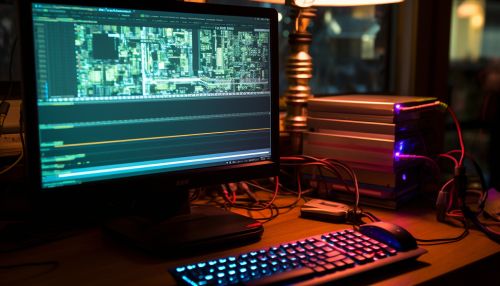Backward Chaining
Overview
Backward chaining is a method used in artificial intelligence (AI) and logic programming, particularly in Prolog programming language and automated theorem provers. It is a form of reasoning that starts from the goal state and works backward to the initial state. This method is often used in expert systems and game theory, where the desired outcome is known, and the challenge is to find the sequence of actions that leads to this outcome.


Concept and Principles
Backward chaining is based on the concept of modus ponens, a rule of inference in logic. It involves starting with a list of goals (or hypotheses) and working backward to see if there is data available that can support them. If the data is not available, the system will seek to infer it by examining the rules of the system.
The principles of backward chaining include:
- Goal-Driven Reasoning: Backward chaining is a goal-driven or goal-oriented method. It starts with a goal and works backward to find the evidence or facts that support this goal.
- Inference: The method uses inference rules to determine which facts can support the goal. These rules are usually expressed as IF-THEN statements.
- Recursion: Backward chaining often involves recursion, as each sub-goal spawns its own sub-goals. The process continues until a solution is found or all paths have been explored.
Backward Chaining in Artificial Intelligence
In artificial intelligence, backward chaining is used in rule-based expert systems. These systems are designed to solve complex problems by reasoning about knowledge, represented primarily as IF-THEN rules rather than through conventional procedural code.
The backward chaining approach in AI involves the following steps:
1. Identify the Goal: The process begins by identifying the goal or the desired outcome.
2. Find Rules: The system then finds rules that conclude with the goal. If no such rules are found, the goal cannot be achieved.
3. Evaluate Rules: Each rule is evaluated by examining its premise. If the premise is true, the rule is applied, and the goal is achieved. If the premise is not true, it becomes a sub-goal, and the process repeats.
4. Repeat Process: The process continues recursively until a rule is found that has a true premise or no further rules can be found.
Backward Chaining in Logic Programming
In logic programming, backward chaining is used to solve queries by working backward from the query to the given facts. The Prolog programming language is a notable example of a logic programming language that uses backward chaining.
The process in logic programming involves:
1. Pose Query: A query is posed to the system.
2. Match Rules: The system attempts to match the query with the conclusion (right-hand side) of a rule.
3. Create Sub-Goals: If a match is found, the premises (left-hand side) of the rule become new sub-goals.
4. Solve Sub-Goals: The system then attempts to solve these sub-goals, either by matching them with facts or by matching them with the conclusions of other rules.
5. Repeat Process: The process continues until the query is solved or no further matches can be found.
Comparison with Forward Chaining
Backward chaining is often compared with forward chaining, another reasoning method used in artificial intelligence and logic programming. While backward chaining starts with the goal and works backward to the facts, forward chaining starts with the facts and works forward to the goal.
There are several differences between the two methods:
- Direction of Reasoning: The most obvious difference is the direction of reasoning. Backward chaining is goal-driven, while forward chaining is data-driven.
- Efficiency: Backward chaining can be more efficient when the number of goals is small, while forward chaining can be more efficient when the number of facts is small.
- Usage: Backward chaining is often used in diagnostic systems, where the goal is to find the cause of a known problem. Forward chaining, on the other hand, is often used in predictive systems, where the goal is to predict the outcome based on known facts.
Applications
Backward chaining has a wide range of applications, including:
- Expert Systems: Backward chaining is used in expert systems for diagnostics, planning, and decision support.
- Game Theory: In game theory, backward chaining is used to determine the optimal strategy in sequential games.
- Logic Programming: Backward chaining is used in logic programming languages like Prolog to solve queries.
- Automated Theorem Proving: Backward chaining is used in automated theorem proving to prove theorems by working backward from the conclusion to the premises.
See Also
- Expert Systems - Artificial Intelligence - Logic Programming - Prolog Programming Language - Automated Theorem Proving - Game Theory
